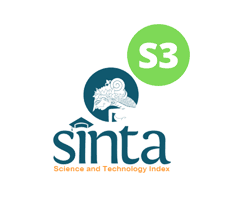Evaluasi lanskap daya tarik wisata pantai di Kecamatan Kuta dengan metode Coastal Scenic Evaluation System (CSES)
DOI:
https://doi.org/10.24843/JAL.2025.v11.i01.p04Keywords:
beach management, coastal tourism, landscape quality, tourist attractionAbstract
One of the tourism areas renowned for its coastal tourism is Bali. The main attraction of Bali is its natural beauty, with the most popular natural tourist attractions being beaches/oceans. Many favorite tourist spots are found in Kuta. Tourism development tends to focus on the construction and development of tourist attractions without paying much attention to the sustainability of the attractions themselves. The purpose of this study is to determine the quality landscape in the beach area of Kuta District and provide landscape development recommendations to improve its quality. This study focused on finding recommendations that can be implemented to preserve the natural attractions present on the beach. The method used in this study is a descriptive method with a quantitative approach, utilizing observation and literature studies for data collection. Data were obtained through observations and processed using the ‘CSES 2018 V1’ program. The research results show that the five beaches in Kuta District, such as Seminyak Beach (D = -0.65), Legian Beach (D = -0.66), Kuta Beach (D = -0.66), Kelan Beach (D = -0.80), and Kedonganan Beach (D = -1.05), have highly similar landscape characteristics. Based on the classification of D values using the CSES method, these five beaches fall into Class V beaches (D < 0.00), which are described as highly unattractive urban areas.
References
Badan Pusat Statistik Kabupaten Badung. (2017). Letak Astronomi Kabupaten Badung Dirinci Per Kecamatan. https://badungkab.bps.go.id/id/statistics-table/1/MzgjMQ==/%20letak-astronomi-kabupaten-badung-dirinci-per-kecamatan-2016.html
Bali Post. (2024). Kumuh, Pantai Kuta Diminta Ditata Kembali. https://www.balipost.com/news/2024/01/26/385135/ Kumuh,Pantai-Kuta-Diminta-Ditata...html
Bupati Badung. (2013). Peraturan Daerah Kabupaten Badung Nomor 26 Tahun 2013 tentang Rencana Tata Ruang Wilayah Kabupaten Badung Tahun 2013-2033.
Bupati Badung. (2016). Peraturan Daerah Kabupaten Badung Nomor 17 Tahun 2016 tentang Rencana Induk Pembangunan Kepariwisataan Kabupaten Badung Tahun 2017-2025.
Ergin, A. (2019). Coastal Scenery Assessment by Means of a Fuzzy Logic Approach. Dalam Coastal Scenery Evaluation and Management (hlm. 67–106).
Ergin, A., Karaesmen, E., & Guler, H. G. (2018). Coastal Scenic Evaluation System (CSES) User’s Manual. http://cses.ce.metu.edu.tr
Ergin, A., Karaesmen, E., Micallef, A., & Williams, A. T. (2004). A New Methodology for Evaluating Coastal Scenery: Fuzzy Logic Systems. Area, 367–386.
Kanal Bali. (2022). Pantai Kuta Ditata Ulang, Pemerintah Siapkan Dana Rp 250 Miliar. https://kumparan.com/kanalbali/pantai-kuta-ditata-ulang-pemerintah-siapkan-dana-rp-250-miliar-
1yx75rLhxj5/full
Pratiwi, I. A. M., Anandari, I. G. A. A. A., & Saskara, I. A. G. D. (2023). Analisis Sektor Unggulan dan Potensi Ekonomi di Provinsi Bali Pasca Pandemi Covid-19. E-Jurnal Ekonomi dan Bisnis Universitas Udayana, 12(05). https://ojs.unud.ac.id/index.php/EEB/
Utama, I. G. B. R., & Krismawintari, N. P. D. (2022). Popularitas Daya Tarik Wisata Pantai di Bali Sebelum dan Masa Pandemi Covid-19 Menurut Wisatawan Domestik. Sebatik, 26(1), 326–331.
https://doi.org/10.46984/sebatik.v26i1.1814
Widyastuti, A. R. (2010). Pengembangan Pariwisata yang Beorientasi pada Pelestarian Fungsi Lingkungan. Jurnal EKOSAINS, II(3), 69–82.
Wiranatha, A. A. P. A. S., Pujaastawa, I. B. G., Suryawardani, I. G. A. O., & Sudana, I. P. (2019). Analisa Pasar dan Indeks Kepuasan Wisatawan Nusantara (Vol. 1). http://www.disparda.baliprov.go.id
Downloads
Published
Issue
Section
License

This work is licensed under a Creative Commons Attribution-ShareAlike 4.0 International License.
An author who publishes in the Jurnal Arsitektur Lansekap (JAL) agrees to the following terms:
- Author retains the copyright and grants the journal the right of first publication of the work simultaneously licensed under the Creative Commons Attribution-ShareAlike 4.0 License that allows others to share the work with an acknowledgement of the work's authorship and initial publication in this journal
- Author is able to enter into separate, additional contractual arrangements for the non-exclusive distribution of the journal's published version of the work (e.g., post it to an institutional repository or publish it in a book) with the acknowledgement of its initial publication in this journal.
- Author is permitted and encouraged to post his/her work online (e.g., in institutional repositories or on their website) prior to and during the submission process, as it can lead to productive exchanges, as well as earlier and greater citation of the published work (See The Effect of Open Access).
Read more about the Creative Commons Attribution-ShareAlike 4.0 Licence here: https://creativecommons.org/licenses/by-sa/4.0/.


















